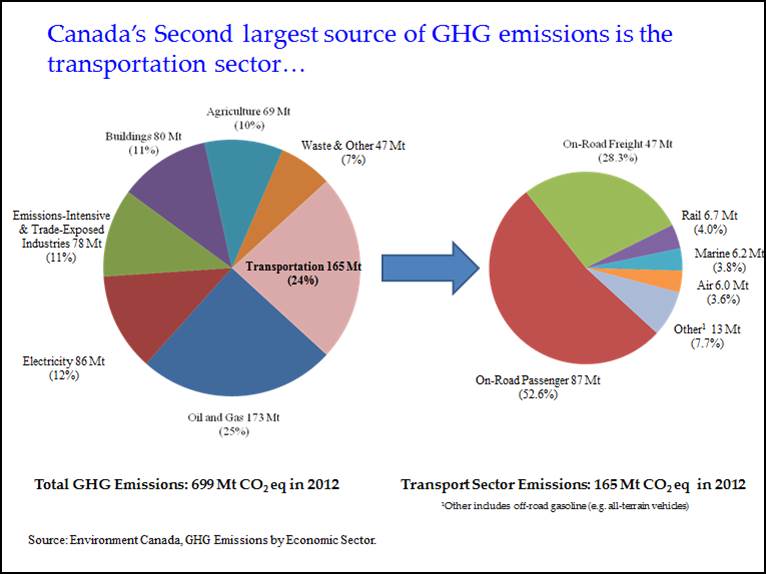This article introduces a discussion on the resilience of transportation systems when exposed to extreme cold weather.
In this contribution to TAC News, Terry Zdan, Policy Consultant, Policy and Service Development, Manitoba Infrastructure and Transportation, provides an overview on how climate change impacts transportation systems. Proposed by TAC’s Climate Change Task Force, this feature article profiles climate change-related initiatives of TAC and its member organizations.
In a changing world of increasing climate variability, we need more resources to increase transportation systems’ resilience to adapt to cold climate extremes.
For the purpose of this article, “climate resilience ... [is]... defined as the capacity for a ...system to: (1) absorb stresses and maintain function in the face of external stresses imposed upon it by climate change and (2) adapt, reorganize, and evolve into more desirable configurations that improve the sustainability of the system, leaving it better prepared for future climate change impacts”. [1] [2] [1]
Transportation organizations may consider reassessing how climate change, which influences precipitation, is impacting hydraulic design standards. The structural capacity of infrastructure is engineered, designed and constructed to codes and standards that remain largely based upon historical climate and, until revised, remain decoupled from emerging shifts in temperature and weather extremes.
Reviewing transport system critical thresholds and incorporating climate change factors into transportation infrastructure system policy, programming, project decision-making and management can help build resilience.
Dealing with the Canadian Winter Climate
Extreme cold weather continues to present challenges impacting transportation systems and the safety of all transportation service providers and users. These include airport closures; equipment breakdowns and failures; frozen fuel; rail and shipping delays; induced schedule breakdowns and bottlenecks in the logistics and supply chain networks.
Resilience deficiencies are often amplified in the Canadian context of extended transportation networks and long travel distances for passenger and freight movements. In Western Canada, “… an example from this harsh winter was the claim railways made that extreme cold weather was the principle reason for Canadian grain shipment delays”.[2]
In January 2014, record cold temperatures and heavy snowfalls led to closures of many Ontario southwestern highways.
“Nearly all parts of Canada under the deep freeze experienced steady winds around 30 to 40 kilometres per hour. In some areas along the north shore of Lake Erie, those winds reached 70 km/h, with gusts as high as 100 km/h. This brought local wind chill levels as low as −48 °C. Several Ontario locations along Lake Ontario and the St. Lawrence Valley experienced cryoseisms or frost quakes”.[3]
The safety of road-related infrastructure, such as bridges, is also affected by extreme cold temperatures. Travel restrictions on the Prince Edward Island Confederation Bridge usually only apply to high-sided vehicles, motorcycles, and vehicles towing objects. However, on February 16, 2014 the bridge was closed to all traffic due to harsh winter conditions.[4]
Climate change continues to affect North America weather patterns. An Indiana University 2014 study revealed that spatial patterns of extreme temperature anomalies -- readings well above or below the mean -- are warming even faster than the overall average.
“…It may seem counterintuitive that global warming would be accompanied by colder winter weather at some locales … the observation aligns with theories about climate change, which hold that amplified warming in the Arctic region produces changes in the jet stream, which can result in extended periods of cold weather at some locations in the mid-northern latitudes…”[5]
Understanding Climate Change Impacts
Carbon dioxide is the main contributor to climate change, especially through the burning of fossil fuels. An Environment Canada analysis of transportation trends illustrates that transportation activities in Canada represent about a quarter of the national greenhouse gas emissions.

*Source: Environment Canada, GHG Emissions by Economic Sector
Increasing resiliency in transportation systems will first require a commitment to reduce greenhouse gas emissions. This can be achieved by implementing behavioural changes and fuel conservation measures and adopting new technologies. Risk and vulnerability assessments, examined through future climate scenarios, can also help organizations better understand climate change impacts.
Some organizations, like Engineers Canada, are undertaking work to help determine climate risk of existing public infrastructure. Co-sponsored by Natural Resources Canada, the Public Infrastructure Engineering Vulnerability Committee (PIEVC) assesses infrastructure vulnerability to current and future climate. Under a PIEVC vulnerability assessment, the engineering, design, construction, materials, water management, and maintenance and operation aspects are all investigated to address resilience to climate extremes.
The Canadian Climate Change Scenarios Network (CCCSN) can also provide climate scenarios to help organizations develop adaptation plans and strategies to increase the resilience of transportation systems.
[2] Source: http://www.producer.com/2014/02/clogged-slow-rail-service-causes-port-delays/, accessed April 30, 2014.
[3] Source: http://en.wikipedia.org/wiki/2013%E2%80%9314_North_American_cold_wave, accessed April 29, 2014.
[4] Source: http://www.theweathernetwork.com/news/articles/powerful-winter-storm-walloping-atlantic-canada/21562/, accessed December 17, 2014.
[5] Source : http://www.sciencedaily.com/releases/2014/12/141209101308.htm accessed December10, 2014.